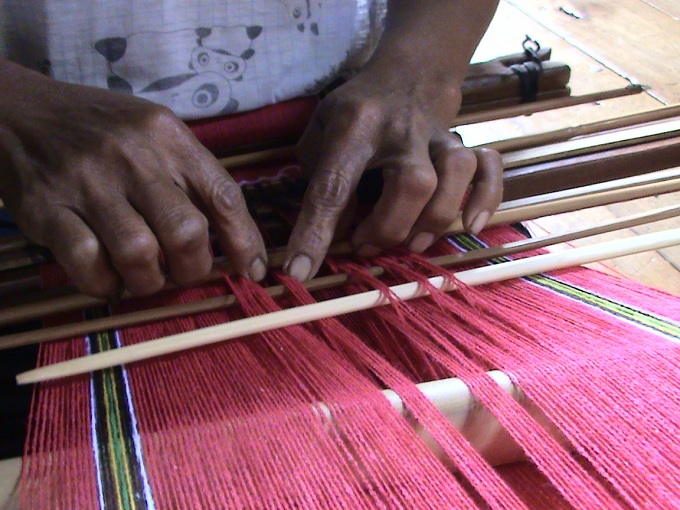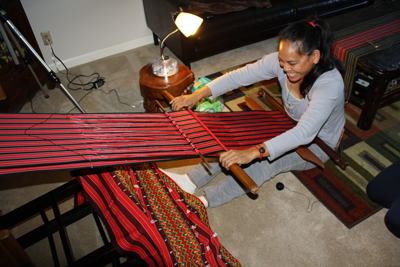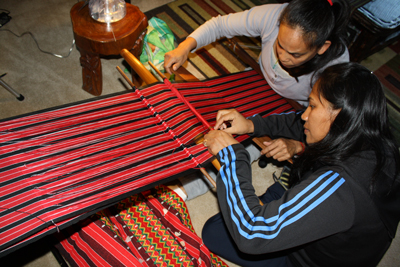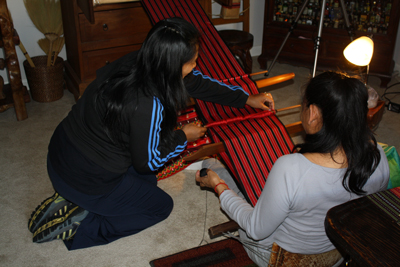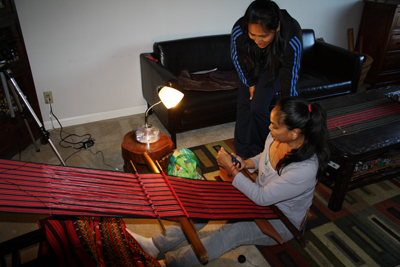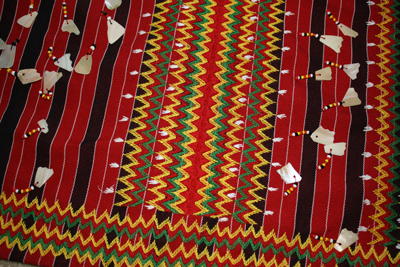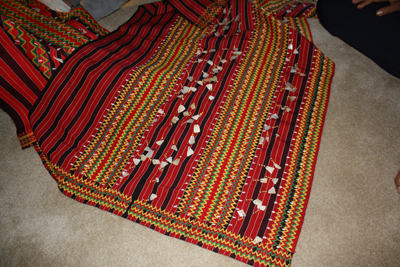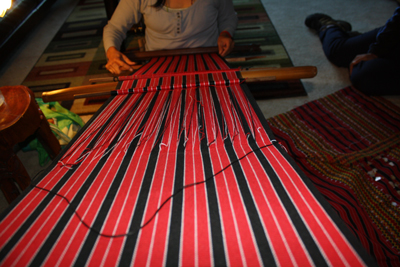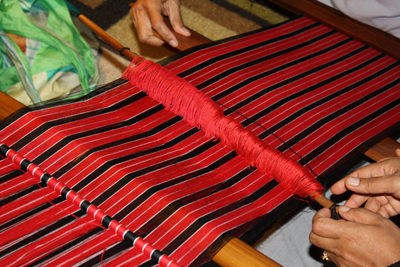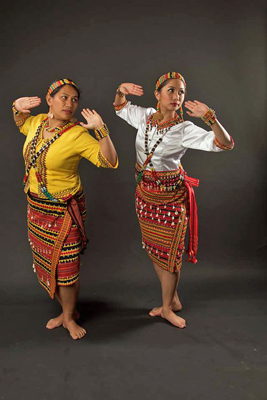Photo courtesy of the artist.

Jenny Bawer Young
Kalinga laga weaving and dance

Jenny Bawer Young learned Kalinga weaving from her maternal grandmother, Mambot Cusay, and her aunt, Alice Dumatog, in her native barangay, or neighborhood, of Mabilong, Lubuagen, in the Kalinga province. Jenny began weaving as a child, creating her first belt at the age of 10. Jenny is the only Kalinga weaver to have immigrated to California, and perhaps the entire United States.
Kalinga is a province of the Philippines and home to an indigenous people of the same name. Kalinga weaving, or laga, is traditionally done by women using five sticks on a backstrap loom. Laga is used to create blankets and traditional regalia, including be-e (men’s g-string), tapis (women’s skirt), and belts. Today, tribal members often wear Western clothing, but traditional clothing is still highly valued and worn during community celebrations, family celebrations, festivals, and rituals. The woven skirts, belts and other articles are especially utilized in the presentation of the dances that may occur to celebrate the harvest, weddings, war and peace pacts. The dance movements were taken from the environment and earthly surroundings and carry different meanings and histories. The dances capture the beliefs, celebration, and movement of everyday life of the Kalinga people.
Of her knowledge of laga weaving, Jenny says, “…If asked about what makes me Kalinga, it is my weaving. It is my identity. I want to keep it.”
Jenny is also well versed in the traditional Kalinga dance of Lubuagan, learning dances such as the Banga dance from her father Cirilio “Sapi” Bawer a cultural bearer and co-founder of KAYAW (to “head hunt”) Cultural Group of Lubuagan. Jenny started her training as a dancer at the age of six and her first exposure was attending a peace-pact celebration, in which two tribes were brought together to settle their differences after a contentious past. The dance and music played a central role in celebrating this reunion of people.
Apprenticeship Program

Jenny will teach Kimberly Requesto different patterns and playing styles of the two main traditional instruments found in Kalinga: the Tongatong and Byallingbying, which are both made from bamboo. During the apprenticeship, Kimberly will also review the reasons for the patterns (what music is played for various events), as well as traditional dance movements for the music.
2016
As a mentor artist in ACTA’s Apprenticeship Program in 2016, Jenny trained her apprentice Kimberly Requesto in the practice of the indigenous Kalinga dance of the Philippines.
2012
Jenny mentored apprentice Holly Calica, initiating Holly’s training in laga. They covered the entire process from assembling a backstrap loom to weaving. Jenny and Holly documented the apprenticeship, sharing the learning process with the local and international Filipino community via the internet.

